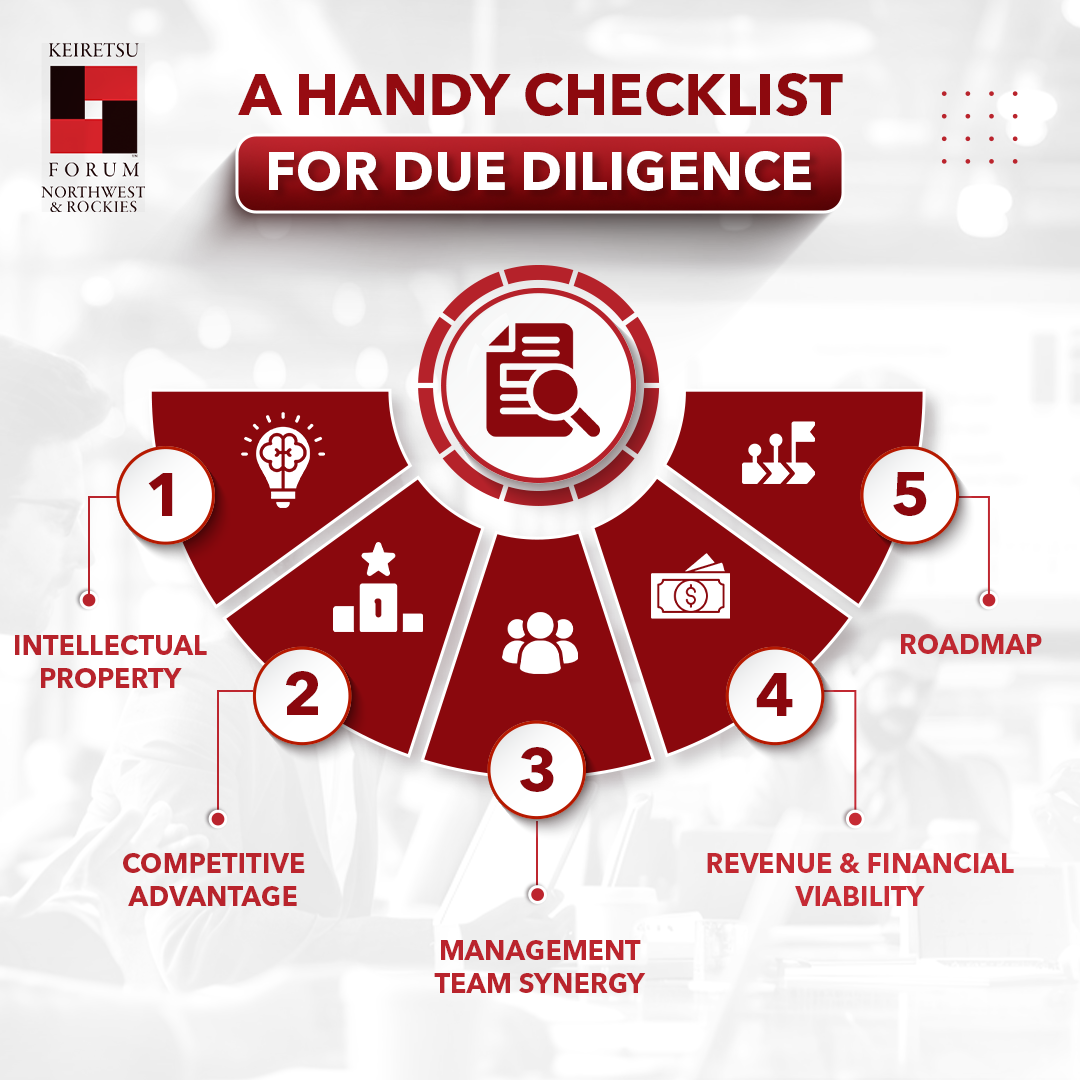
Investing in early-stage companies is a lot like conducting a scientific experiment. Think about it: scientists find a hypothesis, run the calculations on paper, and then proceed with the experiment to verify success. That’s precisely what angel investing is — hearing pitches, conducting due diligence, and backing your instincts with capital, all with the hope of reaping impressive returns.
So, like a scientist, how do you scale that experiment into a winning formula and exit with confidence? The answer lies in two essential tools: due diligence and growth models. These aren’t just processes; they are the frameworks that can help you identify scalable businesses and unlock exceptional value. Let’s explore these frameworks in the below sections.
5 Key Pillars of Due Diligence
Your first step as an investor is to evaluate the startup’s potential for success. A structured due diligence process focused on these five pillars can help you cut through the noise and identify the best investment opportunities:
1. Intellectual Property (IP)
The IP forms the core of the business, and all pitches are centered around it. Due diligence is your chance to look closely at the IP and decide if the innovation is marketable. Consider the following points while assessing the IP:
- Does the company have clear legal ownership of its IP?
- Are the patents filed, granted, or pending? What is the geographic coverage of the patents?
- Does the IP comply with relevant industry regulations?
- Are there any substitutes or alternative technologies that could reduce the IP’s value?
- Are there documented trade secrets, and how are they protected (e.g., NDAs)?
Basically, you need to assess the uniqueness of the idea and determine if there are legal formalities in place to create a moat around the IP.
2. Competitive Edge
A company with a unique IP has to look at indirect rivals, just like online learning platforms used to compete with offline classes. However, a lot of times, you may come across a high-growth potential company operating in an already established market. In such a case, you must assess a few things to understand whether the company has a decent advantage.
Start by looking at the leading competitors and how those brands compare in size, market size, and offerings. Find out what makes your company better: features, quality, usability, etc. Review the pricing strategy and if it can be tweaked for better market share. You can also consider strategic partnerships with other ventures to surpass the competition.
3. Team Dynamics
As an investor, you should see if the management team possesses the relevant skills and experience to achieve the goals they are promising. Look for a good mix of industry experts and business professionals to balance the innovation and revenue sides of the company. Check if the management has enough experience to sustain in the industry. If they lack experience or personnel, you can use your expertise and find the right people to fill the gap.
Here are a few questions you must ask about the team:
- Have you or other key team members worked together before? (It is always a good sign if a few team members have a shared work experience, as it ensures good team chemistry)
- How do you align the team around the company’s mission and values?
- How do you approach critical decision-making as a team?
- What roles do the current team members play, and how are their skills complementary? Are there any key hires planned in the near term?
- How do you handle disagreements within the team? Have there been any conflicts or resignations that have affected team dynamics?
4. Revenue & Financial Viability
Now it’s time to crunch the numbers and see if the company is on its way to success or far from it. Go beyond the “hockey stick” revenue and analyze if the numbers make sense. Look for year-on-year revenue growth, gross margin, burn rate, revenue per customer/unit, customer acquisition cost, and Annual Recurring Revenue (ARR). Check if these numbers meet your expectations.
Remember that it takes 3-5 years for a startup to become profitable, depending on the industry, so don’t rely entirely on the revenue metrics. OpenAI, for example, is not profitable in 2024 but demonstrates tremendous growth potential, attracting significant investments from Microsoft, NVIDIA, and other major players.
5. Roadmap
A strong roadmap reflects the company’s clarity of purpose, operational preparedness, and adaptability. It will help you determine whether the business is on a sustainable path to growth and value creation. Typically, it is presented as a journey marked with milestones.
Use your notes from the other points above to anticipate whether the company will achieve its milestones on time. Also, ask the entrepreneur if they have contingency plans to navigate industry uncertainties (such as another disruptive competitor, changing consumer behavior, etc.)
By focusing on these five pillars, you can make more informed decisions and identify early-stage companies with real potential for success.
Growth Models and Playbooks: Building a Scalable Business
Once you’ve identified a promising business, the next challenge is helping them scale. This is where growth models and structured playbooks come into play. Here are three critical components to focus on:
1. Talent Strategy: Building a Winning Team
Your business is only as strong as the people behind it. As an investor, you are responsible for ensuring that your portfolio company has the best minds working for the collective vision. Adopt a hands-on approach toward talent acquisition and retention. Check if the hiring process accurately identifies the best candidates for the job. Look for candidates with Energy, Enthusiasm, and Experience – The 3Es. Draft a plan to retain top talent for the long term. Consider offering ESOPs, competitive benefits, and career development opportunities for employee satisfaction and loyalty. Build a culture of productivity and empathy where employees feel valued for their efforts. You can also tie incentive programs to company objectives to motivate the workforce.
2. LBGUPS: The Blueprint for Customer Success
Your growth strategy starts with deeply understanding your target personas and value propositions. Study the audience's concerns, the choices in their hand, and what unique value you offer them. Each persona and vertical may have different needs, so tailor your approach accordingly. You can run focus groups with specific customers and ask them about their buyer journey, what they liked, what they want to improve, and if they would prefer your brand over the competitors.
Refer to the LBGUPS framework — Learn, Buy, Get, Use, Pay, Service. Think of it as the life cycle of your customer relationship:
- Learn: How do customers discover your product or service?
- Buy: Is the buying process smooth and intuitive?
- Get: How do customers receive what they’ve purchased?
- Use: Can they adopt and engage with your product easily?
- Pay: Is payment straightforward and frictionless?
- Service: How do you support them post-purchase?
Once you build a solid customer base, focus on onboarding (educating customers on how to get the most value out of your product), growing (introduce membership programs that offer a lot of benefits and tie the customers to your product), and renewing (remind customers of your best-in-class service and why they should stick with you). These strategies will help the company increase its customer size and market share, or in other words, scale up.
3. Processes, Technology, and Scalability: From “Quote to Cash”
The Quote-to-Cash (QTC) model lays down the entire business process, from generating a quote for a product or service to collecting the payment. A typical QTC model for a SaaS company would be: Lead generation and engagement > Quote creation > Proposal submission > Contract negotiation and approval > Order management > Billing and invoicing > Payment collection > Revenue recognition > Post-sales support and upselling.
You can automate certain steps in the QTC process by integrating Customer Relationship Management (CRM) tools, billing and invoice software, CPQ (configure, price, quote) software, and a bunch of other technologies. Use the tech to gather actionable insights into revenue trends and make data-driven decisions. You can also manage more sales volume with these tools without increasing costs, which means scaling up without worrying about expenditures.


